BlueStacks 5 Vs. BlueStacks 4 - Performance Comparison for State of Survival

BlueStacks 5 is meant to be the next big step in our efforts to bring you the best experience when playing your favorite mobile games on PC, and in this regard, we feel we’ve succeeded in many areas. In this sense, while BlueStacks 4 was already awesome and sitting pretty as the most powerful Android emulator out there, this next version completely outclasses it thanks to the myriad optimizations we’ve implemented under the hood, which makes it consume fewer resources and run much better, even on low-end machines.

However, talk is cheap, and while we can spend all day telling you the upsides of BlueStacks 5, you won’t really know what this means in practice. This series of articles is meant to demonstrate how the new version of our emulator can improve your experience in some of the most popular games on the platform, in relation to the load times, resource consumption, and multi-instance capabilities, among others. On this occasion, we’re going to talk about the awesome post-apocalyptic strategy war game, State of Survival.
Let’s begin.
Loading Times
One of the first things you encounter when you launch any game on any platform is the loading screen. This is pretty much inevitable as the game first must preload its assets and store them in the RAM before you can actually start playing, and the length of this process is entirely dependent on the game itself. Specifically, as the game is larger and more complex, the loading times are longer.
Luckily, mobile games are frequently an exception to these long wait times since the games are much smaller than their PC and console counterparts. However, if you play them on PC with BlueStacks, these wait times are even shorter still, considering that you have your powerful PC hardware to run comparatively simpler titles, and State of Survival is no exception.
The initial load times of State of Survival are quite short as it only takes a single loading screen, and then you’re thrust directly into the main city screen, where you can start giving orders. In this aspect, both BlueStacks 5 and BlueStacks 4 perform admirably, boasting relatively equal loading times of about 17 seconds from the moment you click on the app’s icon on the home screen to when you’re actually in the game playing.
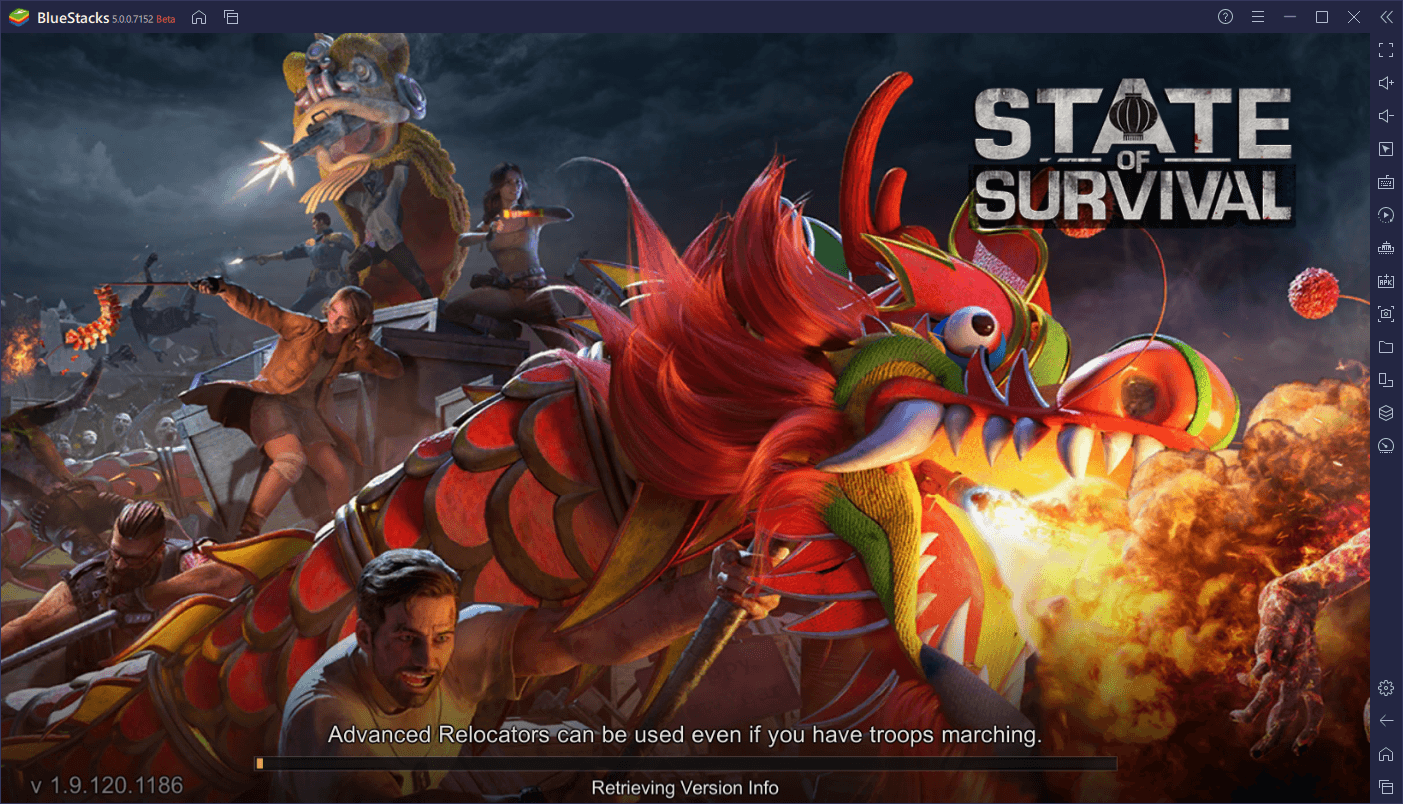
BlueStacks 5
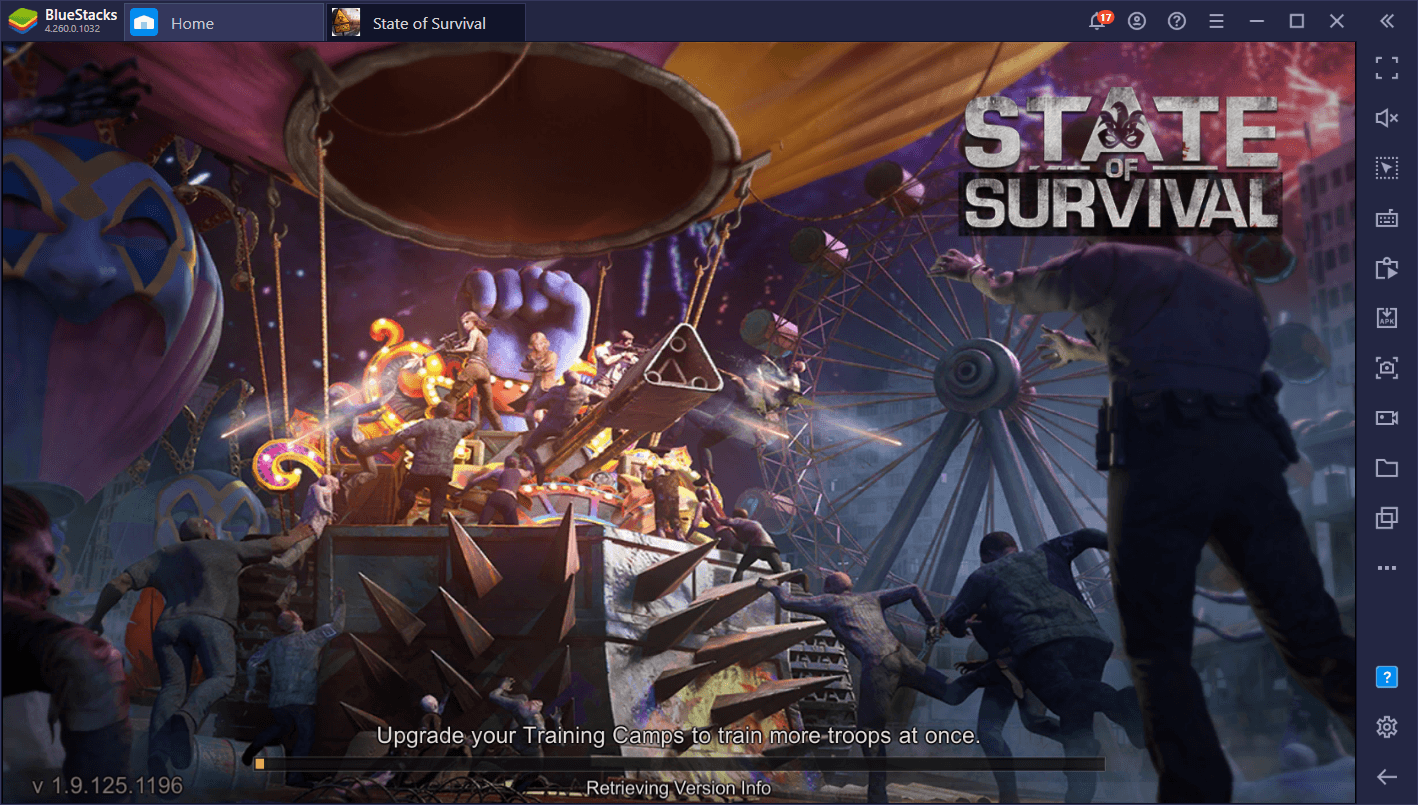
BlueStacks 4
However, these are not the only loading screens in the game as State of Survival also has an alternate game mode called “Explorer Trail”, which consists of real-time combat missions using your crew of survivors. These battles take place on another field, which is separated by a loading screen. Luckily, the wait time is very short on both versions of BlueStacks; about 1 or 2 seconds, tops.
When it comes to loading times, both versions of BlueStacks are pretty much as good as they can get. But can we say the same for resource consumption? Let’s take a look.
CPU Consumption
Now that we’ve established that both versions of BlueStacks are about on par in relation to the length of the loading screens in State of Survival, which is very fast, we need to check if they’re actually efficient in doing so. Namely, while emulator technology has been advancing very quickly, allowing us to enjoy games of a variety of platforms on our PCs, they often require lots of CPU to power their gameplay. And the less optimized the emulator, the more resources they will require and the worse it will run.
Luckily, BlueStacks happens to be very well optimized for a wide variety of games, including State of Survival, requiring very little resources in order to run them with optimal performance. However, BlueStacks 5 is basically developed from the ground up and features lots of code optimizations over the previous version. In other words, while BlueStacks 4 is very fast and light, the newest version is even more so, as you can see in this screenshot.

This capture was taken with both versions running State of Survival and sitting on the main city screen, which is where you’ll spend most of your time in this game. As you can see, BlueStacks 5 is considerably more optimized, requiring around 30% less CPU to run the game under the same conditions. While these improvements don’t mean much to people with modern hardware, gamers who play on lower-end PCs will definitely notice the difference as the game will stutter less and run smoother. These improvements are even more noticeable during the Explorer Trail levels, where CPU usage spikes in BlueStacks 4:
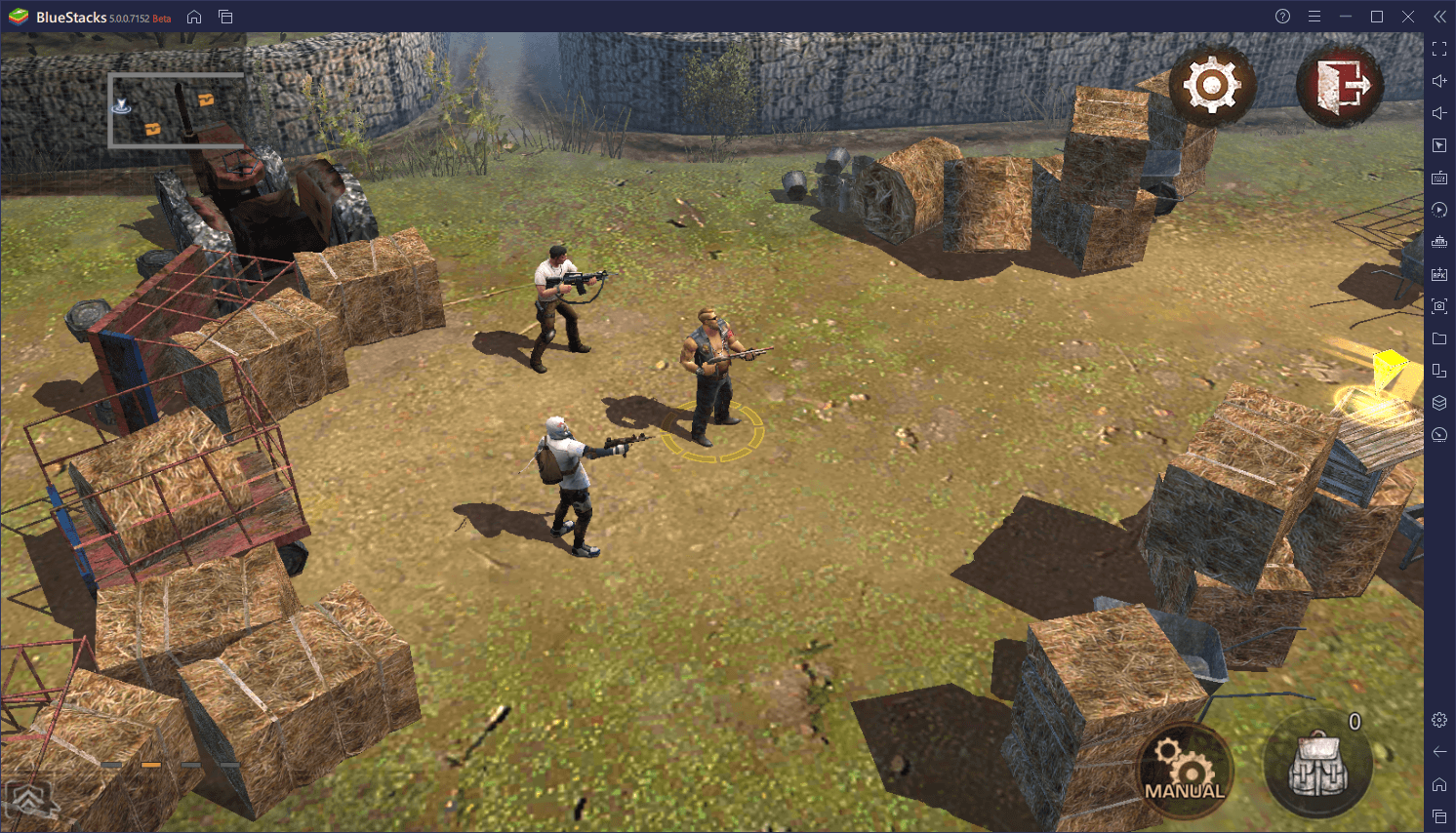
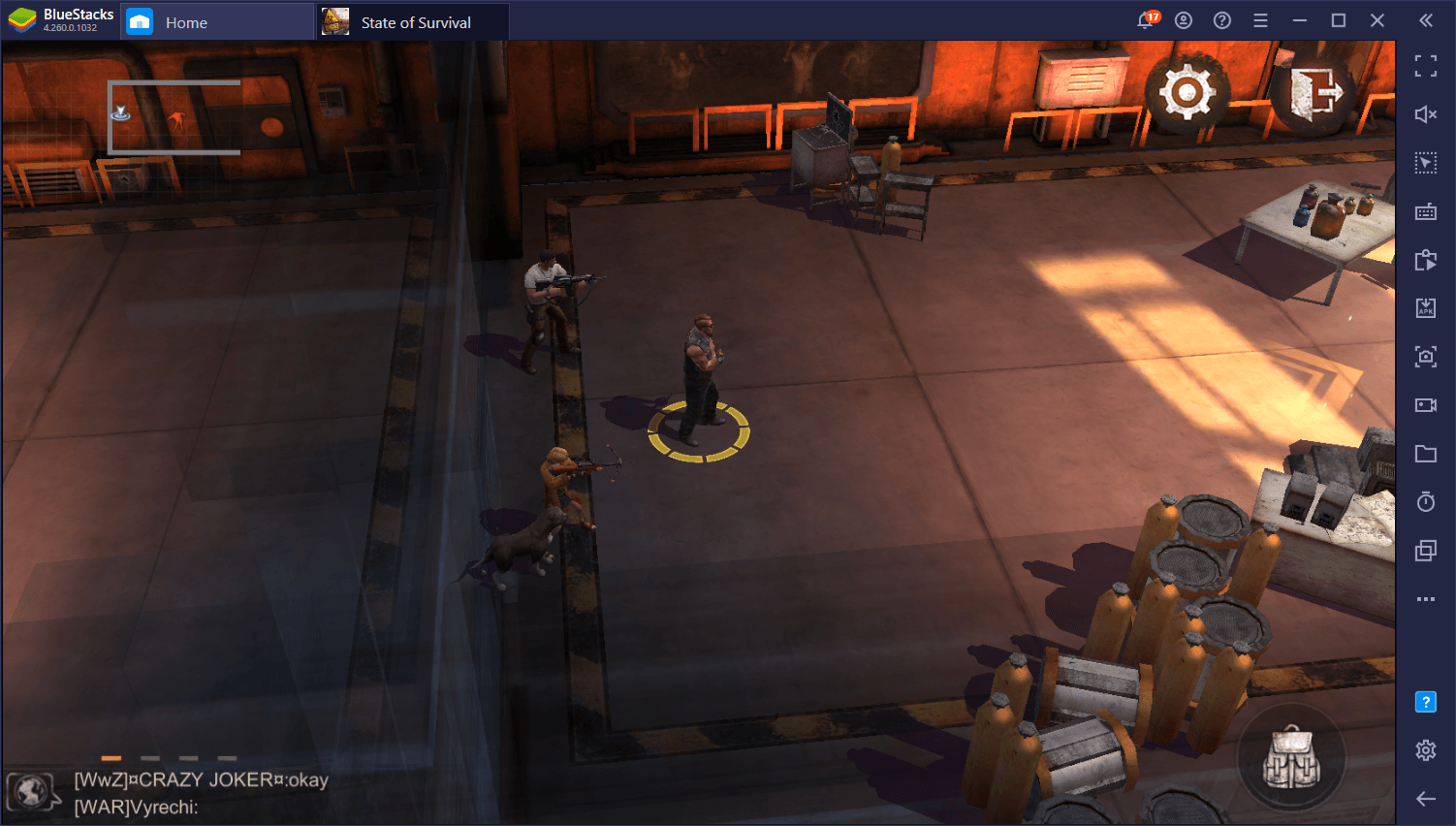

Comparison of CPU Usage in BlueStacks 5 and BlueStacks 4 During Explorer Trail Missions
The gap between BlueStacks 5 and BlueStacks 4 during the Explorer Trail missions in State of Survival expands to about 100%, making the new version of our emulator considerably superior in terms of CPU usage in this case.
RAM Consumption
Aside from CPU power, all apps also need sufficient RAM to operate correctly. Not having enough of this resource, such as in the case of lower-end computers means that your system could slow down considerably when running apps, or even leading to program crashes as your OS will try to forcefully shut down apps to free up RAM. In other words, not having enough RAM is bad.
Aside from CPU optimizations, BlueStacks 5 is also optimized to consume considerably less RAM than its predecessor. While this won’t help to actually make the games run better (that’s mostly dependent on your CPU and GPU), apps consuming more RAM than they should lead to certain issues, such as the ones we mentioned above. Furthermore, if you’re serious about getting good at State of Survival, then you’ll likely want to play on multiple instances simultaneously. These RAM optimizations allow you to create more instances at a lower RAM cost, which we’ll talk about in a bit.
In relation to RAM consumption State of Survival, this is how both emulators measure up:

RAM usage is variable, as you can already tell from the Task Manager numbers we’ve been sharing, so far. While it’s not uncommon for this usage to spike during certain moments, it should generally stabilize after a certain moment. The screenshot above was taken with both games idle in the main city screen, and you can see BlueStacks 5 having around 40% less RAM consumption.
For low-end machines, a RAM spike is all it takes to make your game slow down or crash entirely. The optimizations we implemented in BlueStacks 5 can prevent this entirely and keep your game running for longer periods without spiking in RAM consumption.
Maximum Number of Active Instances
As we mentioned a few moments ago, the most hardcore State of Survival gamers probably play on at least two different accounts. This is because in war games like these, having a secondary farm account is useful for boosting the production of your main city, allowing you to progress and arm yourself much faster.
BlueStacks has significantly improved this aspect for war games through its Instance Manager, a feature that allows players to create multiple instances of BlueStacks and have them all on-screen simultaneously. In this sense, you can have all your State of Survival cities pulled up and on-screen at any moment, without having to painstakingly switch back and forth between them constantly.
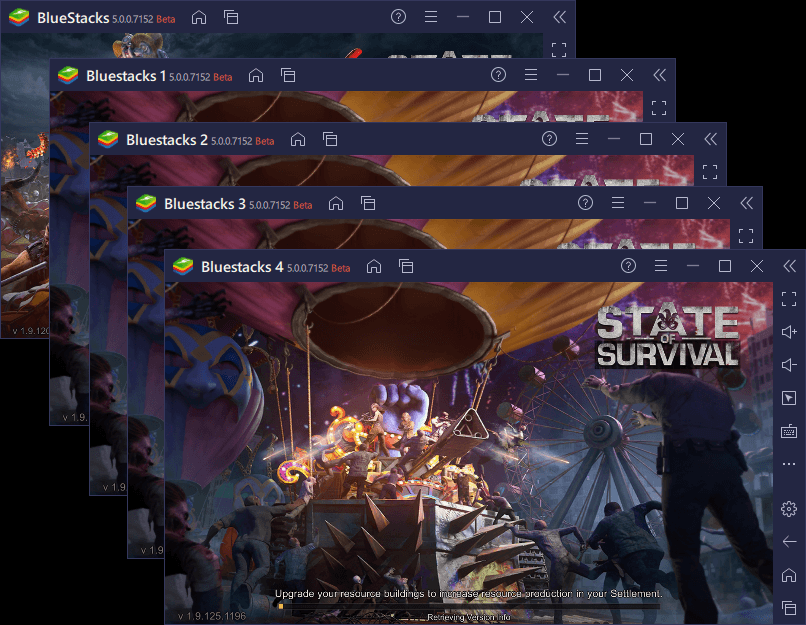
BlueStacks 5 running five instances at the same time.
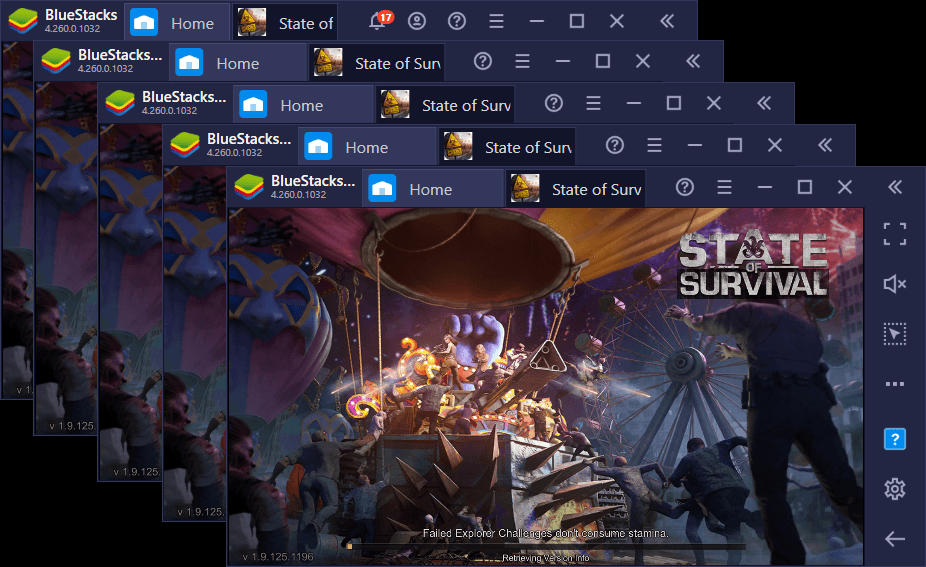
Ditto, but on BlueStacks 4
For most games, you only need a couple of additional instances to get a good setup going. However, we’re here to test how BlueStacks 5 and BlueStacks 4 measure up in several areas, including multi-instance capabilities. To this end, and as you can see above, we’ve decided to conduct a few tests by running five instances at the same time and measuring their resource consumption, and the results were the following:

RAM consumption on BlueStacks while running multiple instances.
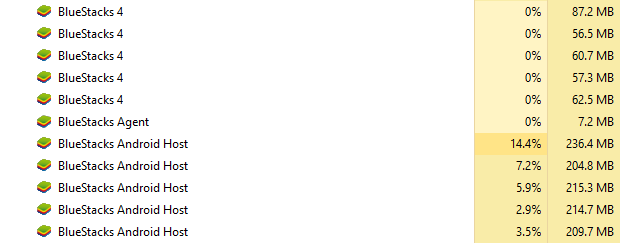
Similar to above, but on BlueStacks 4.
As you can see from the pictures, BlueStacks 4 has more stuff going on in the background in order to power its gameplay, therefore increasing its RAM consumption. This is more apparent when multitasking with the Instance Manager as it shows not only higher CPU consumption overall, but also almost twice the RAM usage on every individual instance.
When it comes to playing on multiple instances, the Eco Mode feature will be quintessential for ensuring optimum performance in your main game. When activated, Eco Mode limits the framerate of all selected instances to reduce CPU consumption, allowing you to play on your main account with no slowdowns or issues, and to control your secondary instances flawlessly via the Multi-Instance Sync tool. When activated, the CPU consumption decreases as follows:

CPU usage on BlueStacks using Eco Mode configured to limit performance to 5 FPS.

Same, but on BlueStacks 4.
The Eco Mode feature received some optimizations on BlueStacks 5, allowing it to function much better and with reduced resource consumption. Compared to the Eco Mode in BlueStacks 4, it’s about 50% more effective, dropping to the CPU usage by about 93% when multiboxing in State of Survival with this feature activated.
Once again, BlueStacks 5 reigns supreme when it comes to multitasking in this war game.
In-Game Performance
Last but not least, the performance.
Though the game looks amazing on both BlueStacks 4 and BlueStacks 5, being capable of running it with the FPS settings maxed out at a steady 60 FPS, BlueStacks 5 is much more efficient in producing the same experience. In other words, you’ll get the same visual quality and performance in both versions of our emulator—even in the chaotic Explorer Trail missions—, but BlueStacks 5 will achieve it without consuming as many resources.
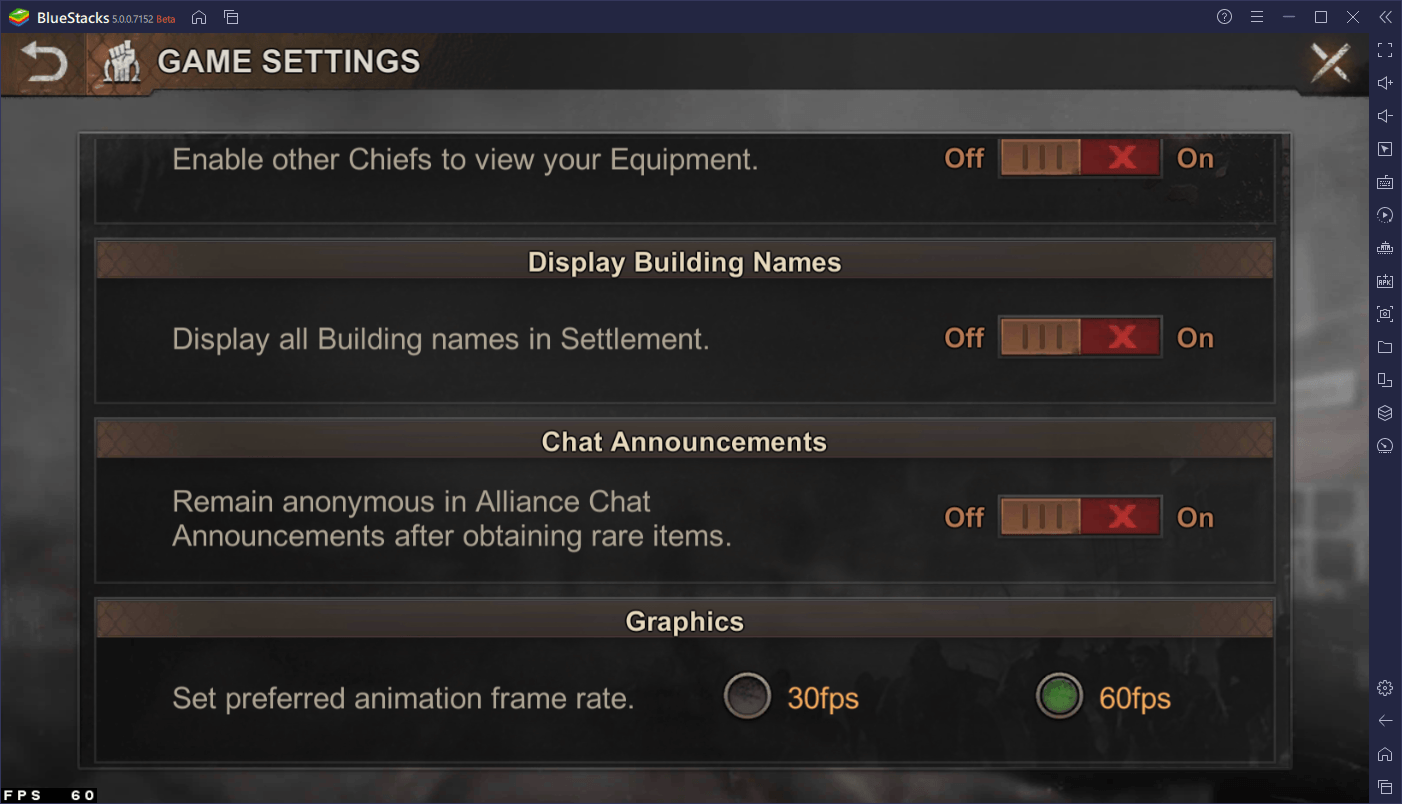

Maximum graphics and 60 FPS on BlueStacks 5.
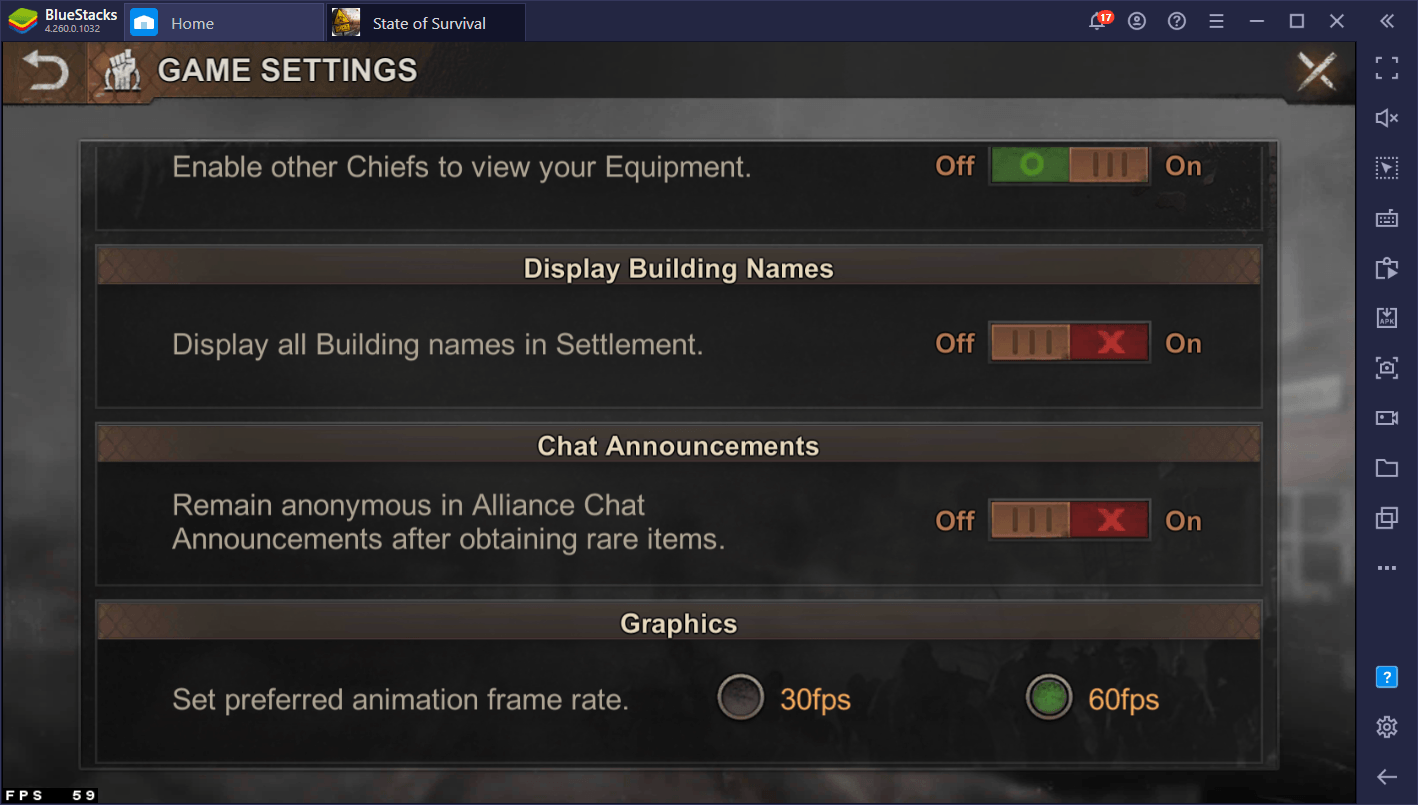
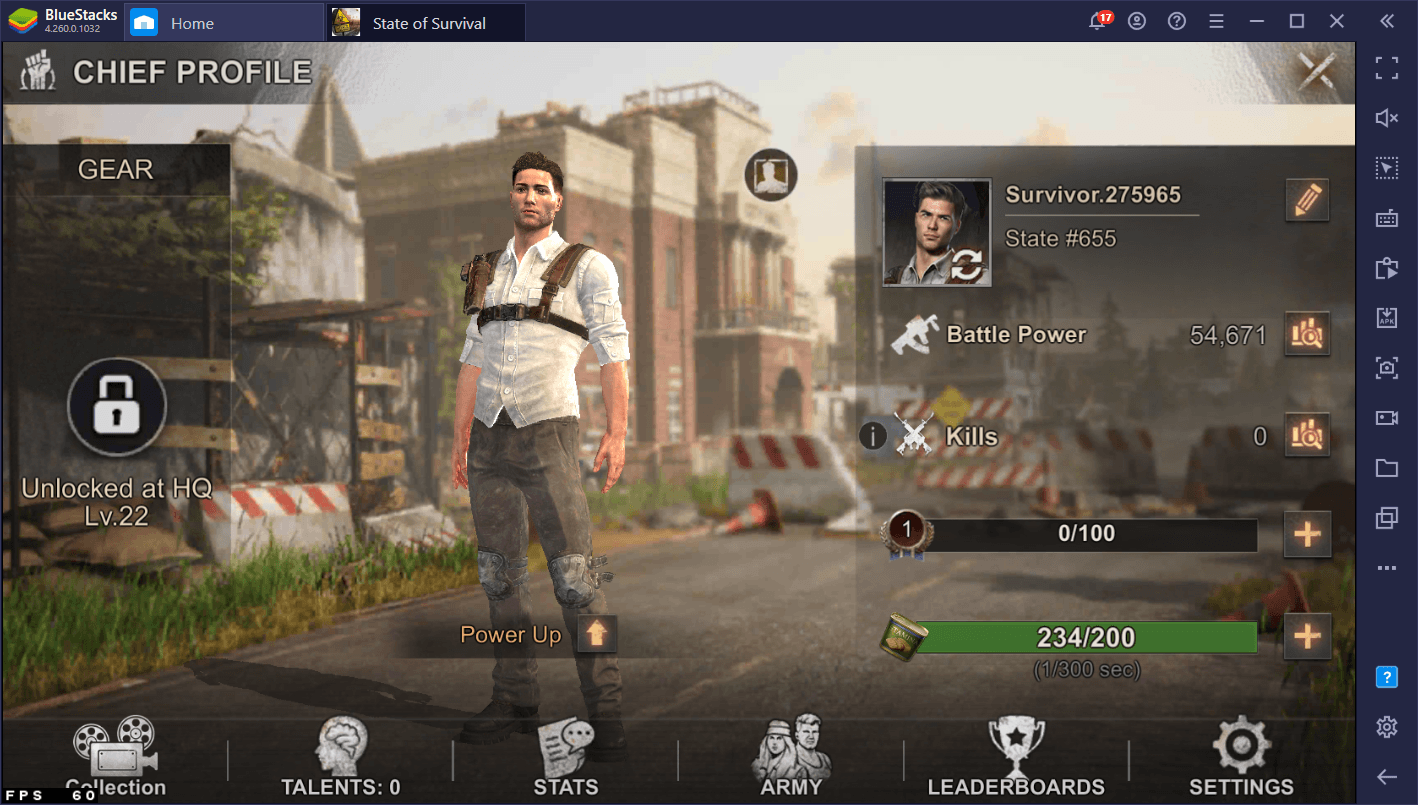
BlueStacks 4 manages to keep up in this aspect.
Other than that, there’s really not much to say in terms of graphics since you could already enjoy pretty much all the game had to offer in this aspect, regardless of your BlueStacks version.
Bottom line, both versions of BlueStacks will give you a great experience with State of Survival. However, if you want to enjoy this great game in the most efficient way possible, then BlueStacks 5 is definitely the way to go.
















